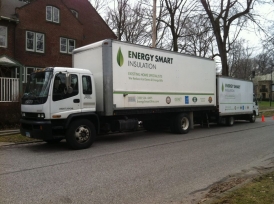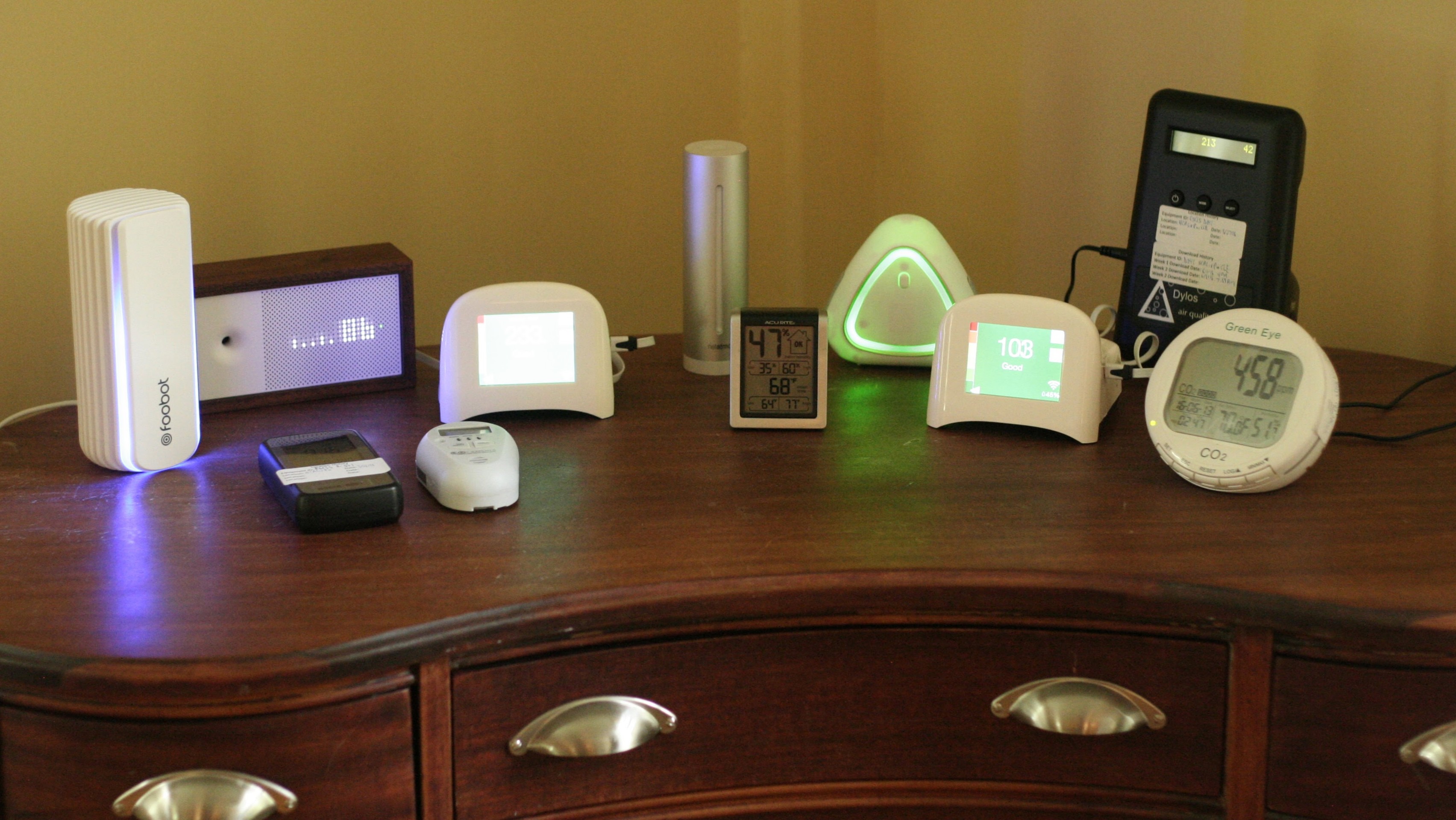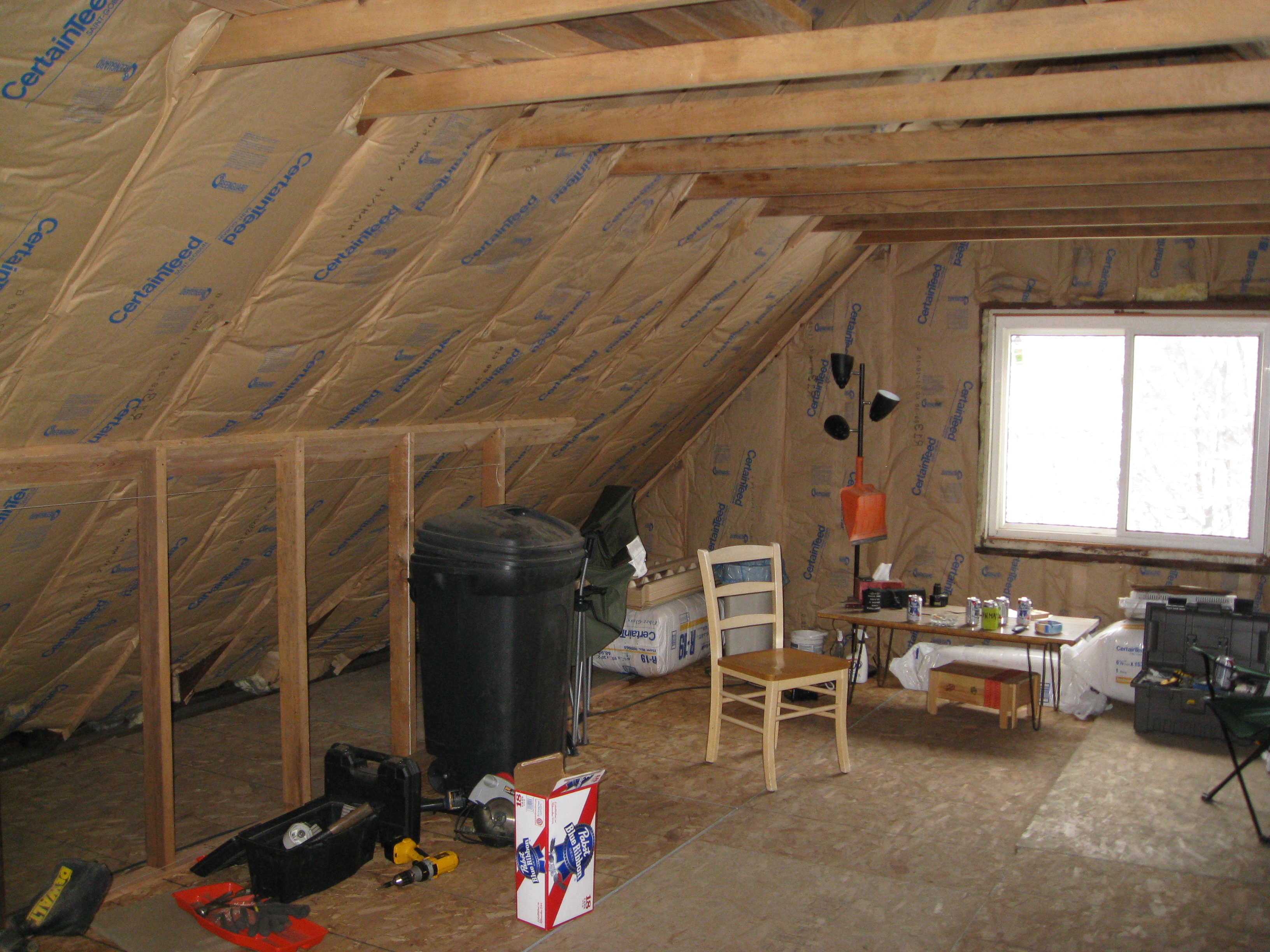One Knob Part 1 of 4 – Goals – Efficiency Program Design
Note: This series is aimed at the Home Performance industry. Energy Smart values transparency, so we put it in the public sphere for homeowners to see and understand our thinking.
In my last post I told the warts and all story of how energy efficiency program design was a huge factor in putting my award winning business under. I promised to talk about solutions this time.
If you are the type whose initial response to new ideas is typically; “No, No, NO!!”, you probably should read no further…

…If, on the other hand, you are comfortable having your schemas stretched and altered, if you are open to and enjoy having your thinking challenged, hopefully you will enjoy this…
You’ll note that my tone in this series may be a little harsher than usual. There was no other way to write it. At some point no matter how nicely you put it, those who stretch the truth may find the truth offensive. Ultimately this is not an attack on bad people, but rather bad structures.1 This series is an attempt to expose harmful program structures that pervert process and prevent optimized outcomes, then offer a different path, a path that removes perversities and aligns all stakeholder interests.
Energy Efficiency Programs (programs) refers to any utility or state program that offers homeowners a rebate, incentive, or subsidized financing to make energy efficient upgrades in their homes. Many of these programs work under the Department of Energy’s ‘Home Performance with Energy Star’ program (HPwES).
Part 1 – Goals of One Knob
Whining without proposing a solution is an awful thing to do, so here are 3 key goals any good program design should achieve. These three things are necessary components to keep programs on track. Without these attributes it is unlikely that Home Performance (HP) will ever scale:
1. Results Focus. Let market forces rule. Free contractors to sell projects that solve homeowner problems. Get bureaucrats out of project decisions, leave the improvement decisions to the collaboration between homeowners and contractors. Stop telling “how” to achieve program goals, just reward to the extent program goals are achieved.
2. Accountability. Provide real accountability and real energy savings. No more claiming credit for ‘hopeful projections’.
3. Market Transformation. Deliver remarkable results to homeowners so they tell everyone they know.
These sound nearly impossible, don’t they?
They’re not. They can all be achieved with a program called One Knob, as in one volume control. Even better yet, this can be achieved with current contractors, current employees, current programs, current equipment and current technology. It will take a little re-training, but not much.
The next parts will begin to fill out the program concept. But first a discussion of what currently exists, then what is possible for the 3 goals of Results Focus, Accountability, and Market Transformation.
What Exists Today – Programs Built Without Considering Results
Energy Efficiency Programs are complicated. The simple ones like the one that killed my business have simple rules, but they complicate work scopes, the sales process, and the jobs themselves. More complicated programs have rules so complicated that they are laughable, except it’s not funny.2
In part, this comes from programs trying to make sure homeowners, ratepayers, and taxpayers don’t get cheated, but they end up cheating homeowners out of results and contractors out of sustaining profits.
Stakeholder priorities are badly misaligned, as well. Program objectives are for high project count and to claim the highest amount of dubious energy savings possible. Homeowners don’t care that much about saving energy, they’re more interested in solving comfort and control problems, and frankly they are very skeptical of energy savings claims.
Programs Control from Above
Currently, either directly or indirectly, project work scopes are created by bureaucrats who don’t actually do or sell the work. They don’t talk to the homeowner, they don’t have to manage the crews, they don’t have to worry about overhead or any of the other things that come with running a real company, and they don’t worry about homeowner outcomes.
This is true of both the simple rebate programs like mine or Efficiency Vermont, and the much more complex programs in NY and CA. This makes working with programs very complex and screws up incentives because all parties are pulling for different things.
Incentives are misaligned and often perverse. Check this out:
“There was a huge emphasis on quantity even if the quality was very poor. Managers often resorted to lying to meet unrealistic quotas. They suffered from perverse incentives that placed fulfilling political goals ahead of efficiency. Firms in general had little incentive to be efficient or control costs.”
That sounds like HP programs, doesn’t it? It’s actually from a blog by Robert Nielsen about why communism failed.3 The author goes on to say:
“One of the greatest failings of communism was its inability to innovate.”
What was one of my biggest complaints about my program, in the end? My flexibility was severely limited, I couldn’t innovate. I had to do work one way, the way the program wanted. I was not able to let market forces work and deliver what clients were looking for. We just chased rebates taking our eyes off solving systemic problems. This seems to be true of every program in the country.
While it’s still early, my current projects which receive NO program assistance are running in the $15,000-$40,000 range. My old average job was $2500. This is what happens when you slow down, build trust, and really focus on homeowner wants and needs. There are still trust barriers that impede sales. If these projects had third party results tracking and could get incentive for energy savings, or On-Bill Financing, this approach is likely to take off.
Trouble at the Kitchen Table
Programs make life at the kitchen table, where all projects are sold, much harder. They are friction when we need grease. Complex rules change, work scopes get changed to fit rebate or fuel type requirements, jobs get adjusted on the fly, rebate structures change, jobs get shut down because they don’t meet ‘payback’ requirements… and on and on. One of the worst problems caused by managing projects from above is that it creates a culture of collusion. Contractors are often forced to lie to get a job approved and pay their bills.4 Program implementers spend time teaching contractors to game models to “pass” instead of helping them improve diagnostic and design skills.
Programs are essentially trying to control Home Performance from the top down, not unlike the communist system controlled Russian economies. How did that work out again? To be fair, this is true of most large bureaucracies. The term ‘red tape’ exists because of bureaucracy.
Summing up, programs just aren’t simple or results focused and this leads to all sorts of accidental barriers that keep Home Performance from scaling.
Results Focus – What Could Be
What if programs only had One Knob to adjust? What if this simple adjustment was aimed specifically at delivering actual energy savings and solving homeowner problems? One singular adjustment that could be changed, and changes could be announced months in advance, so there weren’t ugly surprises at the kitchen table? What if this Knob could be used to speed up or slow down the market predictably like the Fed does with the discount rate? What if this could drive us towards performing comprehensive retrofits to millions of houses instead of thousands because it actually solves homeowner problems? What if a massive industry focused on results could come into existence, one that could finally put a happy ending on the Great Recession? One Knob can do this. Details are coming. Stay tuned.
Accountability – What Exists Today
Currently there is no real accountability for results, either for solving homeowner problems, or for actual energy savings. Contractors can blame programs for hamstringing them when projects don’t deliver what was promised. Programs can blame contractors for doing shoddy work. Utilities take the “lies” from programs to give to Public Utility Commissions mandating energy savings, and nothing really gets accomplished. Fingers point every which way. Homeowners spend lots of money with mediocre results, contractors are exhausted by constant program changes created by bureaucrats who make these changes to justify their existence. No one party actually is accountable or rewarded for actual results. To repeat, this is not the fault of people, it is the fault of the structure. It is not market based.
Programs often have absolutely shocking costs per project due to lack of accountability. Energy Upgrade California spent $200 million in overhead costs since inception to deliver 3615 jobs. That’s $25K/job in overhead, before incentives.5 This is for jobs that are substantially smaller than $25K each. Worse, those projects deliver the consumer 1/3 the energy savings projected by Energy Upgrade California. This program has achieved less than 10% of its goal, by the way.
California is easy to shoot at because it has been so ridiculously wasteful. Their 34% realization rate is the worst of the published program results. New York is in the 45-75% range, depending on fuel.6 Other states have published results, which hover in the 40-60% range. Who is holding these folks accountable? If a friend borrowed $1000 and paid you back $600 and said we’re square, would that be good? That’s what programs and our industry are effectively doing. We’re lucky no one actually tracks their energy bills, or there could be a lawsuit. It doesn’t have to be this way.
All the while naive and idealistic contractors struggle to make a living in Home Performance. I tapped out with a program dependent business model. The system is wasteful, inefficient, and can’t provide a decent standard of living for contractors.
In the current world of contracting there is a fervent race to the bottom on price and quality. I starved to death trying to provide quality without charging enough for it, and Energy Smart is far from alone. Chris Dorsi, author of Residential Energy and founder of the Habitat X Conference, advocates for higher pay scales for insulation contractors, so it’s a common problem.
Without metrics for quality or accountability for results, doing anything more than the bare minimum is a competitive disadvantage.
Accountability – What Could Be
Accountability, through the trust it creates, can be its own reward. One Knob can create a system where excellence is recognized and exalted. This will push the best contractors to the top and allow them to charge more for their services.
JD Power did this for the automobile industry. They took an industry with terrible quality and no metrics and created a ranking. The ranking rewarded Honda and Toyota and almost bankrupted the big three. Now quality is significantly better throughout the industry, and ten year old cars with 150,000+ miles are common. Consumers and the high quality companies won, low quality companies had to raise the bar or die.
Once you make quality a ranking metric, quality matters. What is quality in HP? Measurable results.
Home Performance is one of the few construction disciplines that actually has measurable results, not just customer satisfaction metrics. We have lots of metrics to rank contractors on: actual energy saved, actual vs. predicted energy saved, actual blower door reduction, actual vs. predicted blower door reduction, $ invested/energy saved, the list goes on and on. With HPXML we have access to ALL of this. HPXML is a central database that pulls information from various energy modeling software for easy analysis by programs. We have this right now. Today. Very little new is required.
Market Transformation – What Exists Today
I was born in 1978. Energy Efficiency programs have been in place in one form or another since then. I’ve heard that at current job volumes, it will take 500 years to retrofit the homes that need to be retrofitted in the next 20 years.7 The large Home Performance with Energy Star (HPwES) programs were projecting 0.5% growth for 2013.8 Wouldn’t we need just a little bit faster growth than that to get there? Tell me how we’re achieving market transformation right now?
I’m a Home Performance consultant. I was an HP contractor. Yet I couldn’t define Home Performance for you 3 years ago. We only barely have a name for ourselves. Consumers have no clue who we are. About one HP job per 1000 HVAC jobs is done, according to the recently passed Phil Jeffers. How is that winning?
California has only hit 10% of its goal. New York is watching contractor participation, job size, and job count fall. My program with Dominion East Ohio has turned into a glorified HVAC rebate program. This one in Connecticut IS an HVAC only program, how is that Home Performance? How is that comprehensive, whole house thinking? How are we winning again?
Currently, the parallels between communism and current energy efficiency programs are so strong that I can literally lift passages of articles about what made communism fail and drop them into this paper.
Could anything that can be so directly and easily compared to communism possibly be expected to achieve capitalistic market transformation?
Market Transformation – What Could Be
What makes someone excitedly tell their friends about something? A spectacular result.
Comprehensive Home Performance that goes beyond an attic insulation job, but stops short of a Deep Energy Retrofit, can deliver spectacular results. If we gain sufficient control over heat, air, and moisture movement we can deliver the 4 Tenets of Home Performance – Comfort, Health & Safety, Durability, and Efficiency. Projects that anyone with about $75 a month or more to improve their home can do.9
How nice is it to be comfortable in your home all the time? Or to not worry about icicles ripping down your ceiling ever again? Or to have your kid’s asthma, that landed him frequently in the hospital, subside? The Home Performance industry can deliver remarkable results. It truly requires systems thinking, but we can. And those results can help create a groundswell. Programs can play an important role.
Here are some of the benefits of Home Performance Market Transformation:
-
A healthier, longer lived populace: reduced allergies, asthma, flu, colds, carbon monoxide poisoning, etc. Health and Safety is the Second Tenet of Home Performance, after all.
-
A more comfortable populace. Home Performance improves Indoor Environmental Quality, or total comfort.
-
A more productive populace. Comfortable people are more productive.
-
A healthier planet – substantially reduced usage of fossil fuels (and an easy transition to pure renewables at little or no additional cost.)
-
Jobs. This is literally a trillion dollar industry at a very conservative $10,000 per home times 100 million existing homes. Think that could help out a bit in providing jobs?
-
Happier, more productive, more innovative contractors. If programs were ridiculously simple yet provided solid accountability, contractors would be free to figure out results driven best practices.
The Cliffhanger
That sounds pretty nice, doesn’t it? It’s within our grasp. We just have to get programs out of the way by focusing on results, implementing accountability, and using both of those to drive towards market transformation. This new program design, One Knob, is very simple and easy to understand.
The details are coming. Next we’ll discuss the Fallacy of Low Hanging Fruit, then the actual One Knob program design, and finally how How One Knob Will Benefit Homeowners, Contractors, and Programs, and open the door to Market Transformation…

Want to Help?
1. Share the heck out of this! Comment! Like! Make noise! Nothing is going to change unless we push for it.
2. Go join the Linked In ‘Get Energy Smart’ group. We’re going to need help making enough noise to get things changed, please add your voice! We’ll update you with action steps there as well.
3. Connect with me on Linked In and mention One Knob. Feel free to email me at nate@energysmartohio.com.
4. Keep reading! Click here to go on to Fallacy of Low Hanging Fruit!
Further Reading for Pros:
One Knob Part 1 – Goals – Results Focus, Accountability, and Market Transformation
One Knob Part 2 – Fallacy of Low Hanging Fruit
One Knob Part 3 – Hard Truths of Home Performance
One Knob Part 4 – Program Design Summary
How an Efficiency Program Killed My Business, Part 1
How an Efficiency Program Killed My Business, Part 2
Confessions of an Insulation Contractor, Part 1
Confessions of an Insulation Contractor, Part 2
The Science Behind Home Performance
True Comfort is Indoor Environmental Quality (IEQ)
Case Study of an Insulation Failure
Image Attribution: Rosie the Riveter Creative Commons/Wikipedia
Image Attribution: Volume Knob Baby Pacifier by Fred sold on BaronBob.com Did you notice it goes to 11?
Footnotes
1 Structure determines behavior. A small steel manufacturer prided itself on fulfilling small orders, and thought it profitable. They based their whole model on it. Except they had unhappy customers and a 53% on time delivery rate, and were losing money. When they dug, they found that it was the small orders that were killing them through myriad problems. A similar problem happens in HP. Check out this Maz Iqbal article about the findings of Robert Fritz.
2 Here is an example of bad program design, but first a definition. A Negawatt is a saved watt of energy, or negative watt, defined by Amory Lovins of the Rocky Mountain Institute. Here is an actual example of how the Negawatt kicker works in the Energy Upgrade California program.Would you like something that works like this? Or something simple?
The kicker is $0.75/kWh if the home doesn’t have existing AC, $0.30/kWh otherwise, and $1.60/therm. A minimum 10% total site savings needs to be projected. The percentage-based component starts at $1,000 and increases by $500 for every addition 5% projected.
The electric and gas savings are then modified by factors designed to counter (as you might have guessed) historical over-projection. Kwh savings are left alone if no AC, but hit with a 0.4 modification otherwise (60% reduction). Gas savings are hit with a 0.8 factor.
For instance, a home without AC that models 25000/18000 kwh existing/improved, and 1100/800 therms existing/improved would be 27.6% site savings. Modified by the therm factor, it would be 24.5% savings, which puts it in the $2,000 tier with a $5,250 kwh and $480 therm kicker, for $7,730.
Is this the best we can do?!?!
3 Robert Nielsen – Why Did Communism Fail? #2 – Absence of the Market – This series of 3 articles is very worth reading, the parallels are astonishing between this argument and how HP programs function.
4 In New York jobs must ‘pay for themselves’ and have a 1 SIR or better, meaning the energy savings from the project will pay for the project within the lifespan of the improvements. The trouble is, with current low energy prices, that just doesn’t happen. So what do you do? You lie. You inflate initial blower door numbers. You fudge the model to show really high initial usage. I have this directly, and off the record, from multiple contractors in NY. This also leads to crappy realization rates. If I promised to make your pickup truck get 50 mpg, is there any prayer I might deliver? Nope. But I had to say that to get the program to say yes to the project and feed my family. That is a great example of a perverse incentive.
5 This is per Ori Skloot in an update video about EUC 2.0 you can see here. Go to 2:30.
6 Report on realization rates from Megdal and Company to NYSERDA for 2009-2011 shows 46% realization rate for electric projects and 73% for natural gas.
7 This is not a political post. Feel free to look at the needed retrofits from your own lens. My main motivation for conservation is to leave something good for my daughter Felicity. I also believe our climate is changing. I believe we are on the cusp of more expensive fossil fuels, which will make efficiency a much more attractive option. We need to be able to both create and meet that demand. And we can. We really, really can. But not how we’re doing it today.
8 This is taken from page 4 of HPwES’s 2012 Annual Data Report. The report is fascinating, take a look through it. A sad note, though, it appears that programs average about $3000 in costs per project for both admin and rebates. How big are these average projects, though?
9 But who will buy these projects?
Think we can’t sell these projects? Is it worth $75/month to make your family much more healthy and comfortable? The cost of a cable bill or cell phone? We have found that if you move to monthly costs, $75-$200/month will provide a comprehensive Home Performance job involving both HVAC and building enclosure work. Here is one example.
This is without programs or special financing. Imagine what happens if those are there to accelerate market transformation? What if these projects could be put on bill and transfer to the next homeowner, so there is virtually no risk?
Acknowledgements:
This series has been the toughest thing I have ever written. It has the potential to truly change the world. There is no way I could have done it alone, I am thankful for having tons of help, thoughtful commentary, constructive criticism, support, clarifications of my crummy writing, keeping me out of arguments I don’t want to get involved in (political, mostly), incredibly helpful changes that strengthened weak parts of the argument, and just generally showing me love by taking the time to really read. Help came from inside and outside the HP industry. Here is a list of those lovely folks, in no particular order. If I missed anyone, it’s my fault!
Chris Dorsi
Griffin Hagle
Michael Panetta
Greg Jones
Val Lumby
Stephen Lacey
Gary Wood
Andy Frank
Larry Janesky
Carrie Coxwell
David Butler
Robert Bean
Bill Spohn
John Craig
Get the HVAC Guide

It's free! Make buying a new furnace, air conditioner, or heat pump less stressful.










